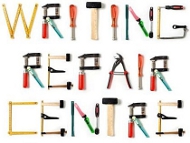About Sue
I recall the day I decided to be a writer. I was working in one of those clerk/admin jobs you take when you’re just trying to pay the rent and don’t really know what to do with your life. The bad news was that my job was all about typing and checking expenses and chasing people for their time cards. The good news was that it was in a TV newsroom with a million entertaining and informative distractions.
For reasons now unclear, I was studying economics at night. My prof returned a class assignment with a comment that scared me. “This paper probably deserved a B,” he said, “but I gave you an A because it was so well written. You should do something with that.”
When you’re working at the best news service in the country it’s not hard to find a real writer who’ll give you advice. Before long, I had a job as a copy clerk along with a pay cut and a life of strange shifts and colourful characters. And I never looked back.
Trained, in television, to write for the ear, I developed a conversational writing style. Even writing for print, I always picture someone reading my stories out loud. And they’re always stories. Even if it’s three lines of ad copy, it’s got to tell a story or I’m not interested. Neither is the audience, I’ll bet.
Journalism took me across the country and back and saw me switch from TV to newspapers, then to magazines. I served as a reporter, producer, columnist, arts reviewer and copy editor. I learned something new every day and got to share it with viewers and readers.
I was managing a bridal magazine (sounds glamorous but wasn’t) when I got a chance to edit the employee magazine at one of Canada’s big banks. It had a circulation much larger than the bride book and a decent budget. Plus it was a “no sequins” zone which (trust me) is a good thing.
In corporate communication, a lot of what you write has a strategy behind it. That makes it all the more interesting, since you have to support some organizational benefit but avoid sounding like propaganda. And you have to resist business babble. You know the stuff: “We commit to leveraging the parameters of our distribution enterprise for a robust paradigm shift to enable our contintued delivery of the value-add to our global markets and provide a sustainable, client-centric future for our communities and bla bla bla.” My nonsense detectors are very sensitive. I won’t write that way and I won’t let you do it, either.
On behalf of employers and clients in industries from financial services to government agencies to nonprofits, I’ve written articles, newsletters, video scripts, speeches, training material, annual reports, business procedures, web copy and communication strategies for internal and external audiences. I’ve also written a book, a business novel, which I am slowly editing and hope to publish in this decade.
Why do I tell you all this? I hope it reveals a bit about how I became an enthusiastic advocate for clear, conversational language that tells a story that means something to the audience.
___________________
If you’d like dates and details, here’s my LinkedIn profileface
I have another business, It’s Understood Communication, a communication coaching, training and consulting business. I help teams and individuals, primarily in technology, improve their face-to-face communication and learn to be more coach-like and less directive. The result is better work, better workplaces, better relationships and (I’m not kidding) better lives.



